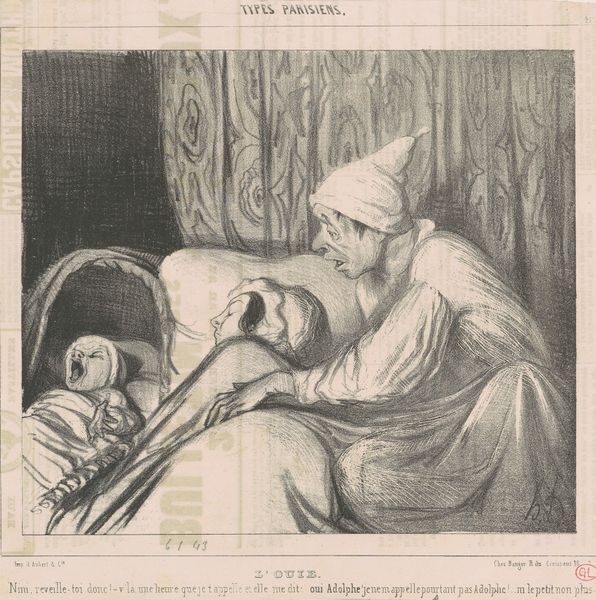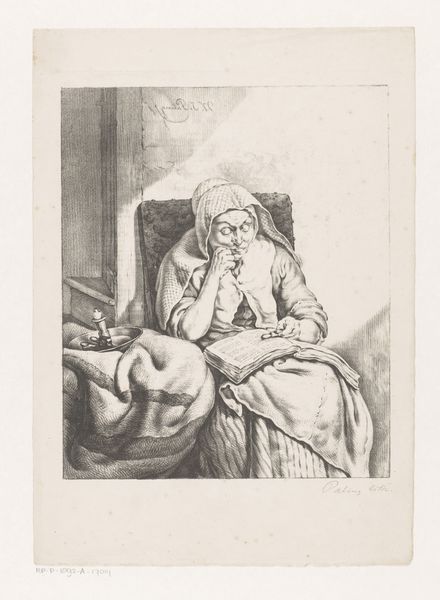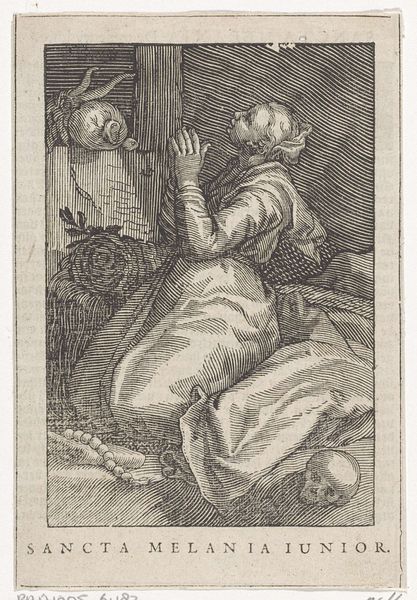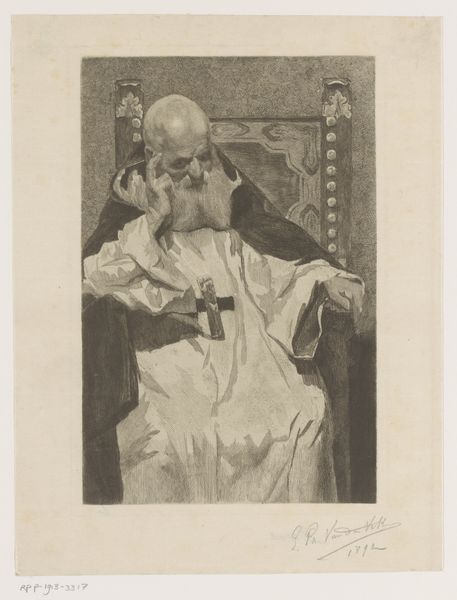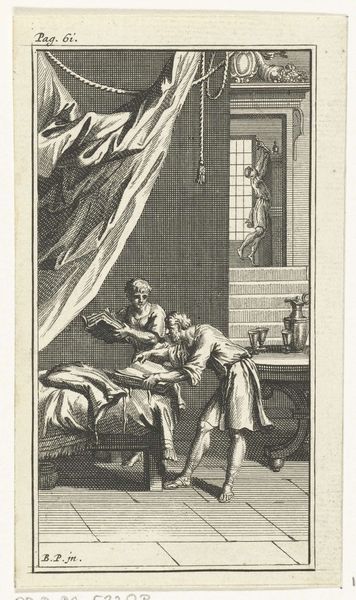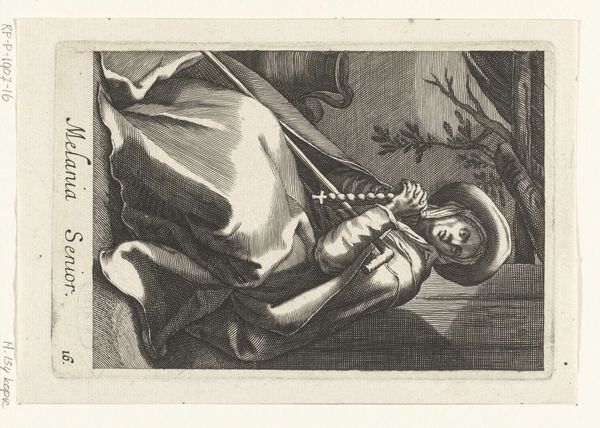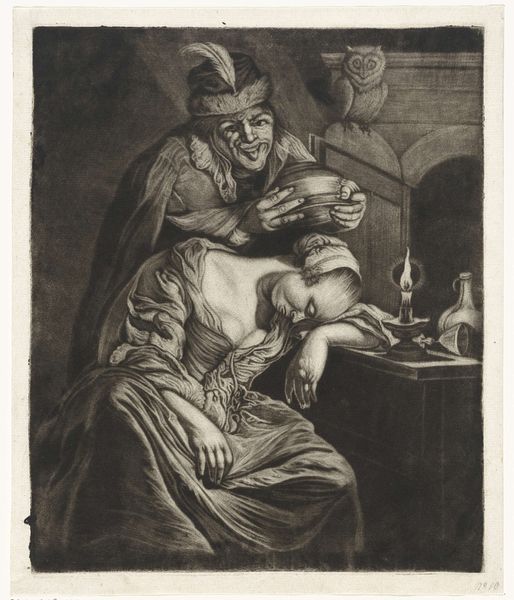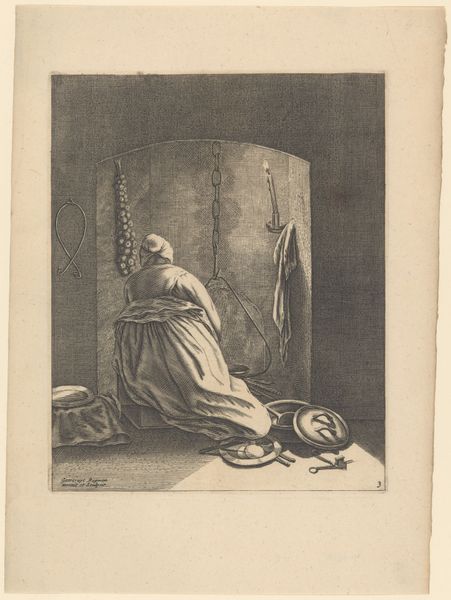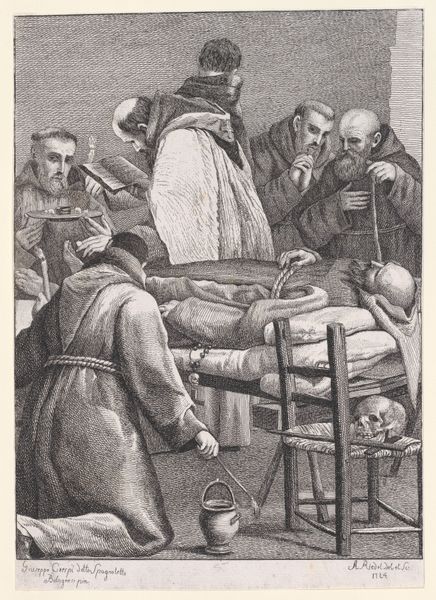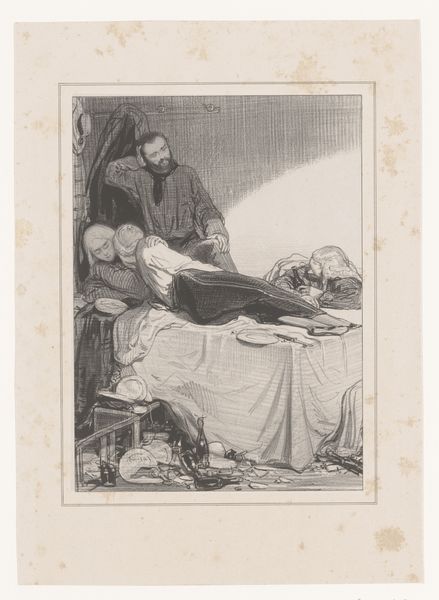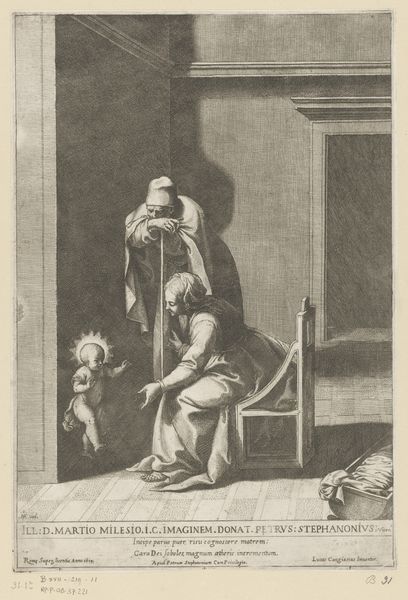
drawing, print, engraving
#
portrait
#
drawing
#
narrative-art
#
baroque
# print
#
caricature
#
vanitas
#
chiaroscuro
#
engraving
Dimensions: sheet: 6 5/8 x 4 7/16 in. (16.8 x 11.3 cm)
Copyright: Public Domain
Curator: This is Claude Mellan’s engraving of Saint Francis de Paul, dating sometime between 1600 and 1688, a period that saw significant artistic and religious change. Editor: Immediately, I am struck by the image's melancholic atmosphere, and the incredibly somber emotional tone evoked by the composition. There's a sense of quiet contemplation bordering on sorrow. Curator: Mellan was a master of line, as we can see in the intricate detail of Saint Francis's habit, or the cross he clutches. The dense hatching creates the chiaroscuro effect, typical of Baroque prints. Editor: This aesthetic reminds me of similar depictions within 17th century counter-reformation art that aimed to create religious experiences to encourage personal piety. Curator: Note the inclusion of the skull and the candle—familiar vanitas symbols reminding us of mortality and the ephemeral nature of life. These were common motifs at the time. Editor: I see the piece reflecting tensions between mortality and spirituality. Saint Francis clutches the cross. The skull beside him creates this visual juxtaposition. The candle signifies the fading of life. It also signifies the endurance of religious faith during times of socio-political unrest. Curator: The composition guides our eye directly to the face. This focal point emphasizes the psychological depth Mellan achieves with a simple engraving technique. Editor: Given the era in which Mellan lived, Saint Francis serves as a symbol, particularly during the tumultuous times marked by widespread conflict and disease. The enduring appeal transcends devotional art and also invites us to look at historical trauma. Curator: It's interesting to consider how an object such as an engraving, with its inherent reproducibility, can simultaneously represent fleeting time and the timeless nature of religious devotion. Editor: Indeed. Reflecting on Mellan's “Saint Francis de Paul,” highlights both the Baroque era’s aesthetic and deeply human responses to questions of faith and existence that continue to be relevant today.
Comments
No comments
Be the first to comment and join the conversation on the ultimate creative platform.


